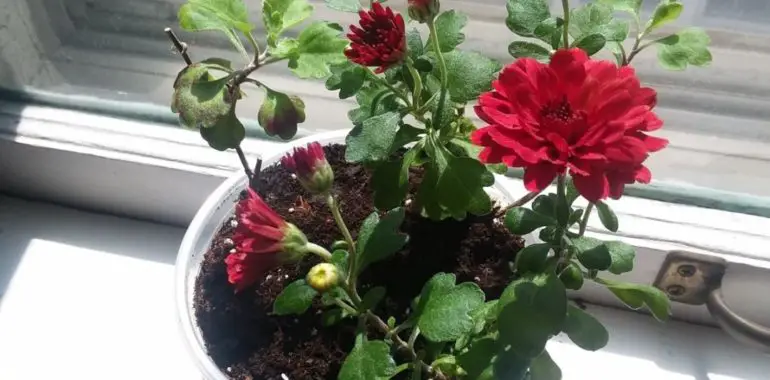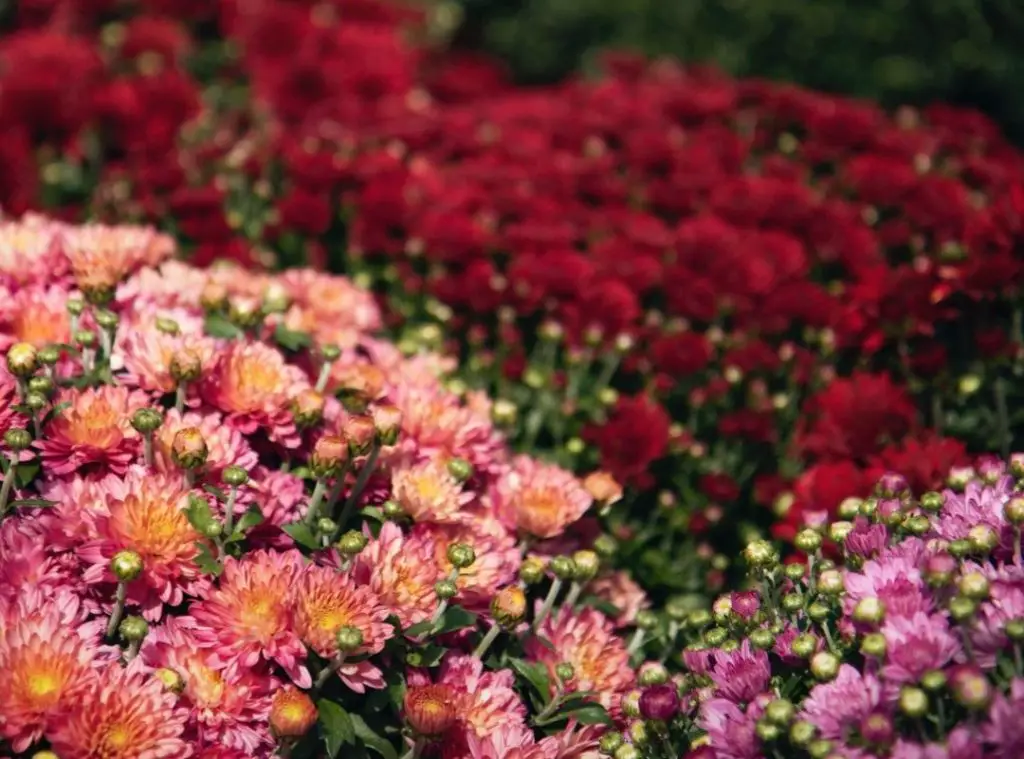How to Grow Mums from Cuttings

How to Grow Mums from Cuttings
Disclosure: This post contains affiliate links. That means that if you click on one of them and make a purchase, I may earn a commission. Thank you for your support!

As a follow-up to my recent article, How to Get Mums to Come Back Next Year, I’m now going to discuss how you can grow mums from cuttings.
Why grow mums from cuttings?
A nice large chrysanthemum (or mum) plant can set you back $30 or more, so buying these every fall as annuals can get quite expensive. By taking cuttings, you can turn one mum into many, and create a lush and abundant mum-scape for very little money. (You could also try growing mums from seed. I have not tried that personally, but maybe I will one of these days.)
Keeping cuttings going over the winter to plant in spring also greatly increases the chances that you can get your mums to firmly establish themselves and come back year after year. If you can get your mums to come back as perennials, not only can you save quite a bit of money, but also you are creating less waste by eliminating the disposable plant pots, the energy used to grow and transport those mums to you and so on.
Many garden centers don’t start carrying mums until fall, which is too late to plant them in the ground and have enough time to establish a strong enough root system to survive the winter. That’s where cuttings come in.
Choosing your mum cuttings
If you don’t currently have any mums, you’ll need to buy a few plants, but try to do it as early in the season as possible. Start checking at the garden centers in August and as soon as you see mums for sale, grab the colors you want. Be sure to get hardy (perennial) mums rather than fancy (annual) mums.

Tip: If you intend to take cuttings from a mum, choose the youngest-looking plants you can find. If the flowers have already started to open, the stems may be too woody and mature to root well. Look for plants that have not yet flowered, with green, young, flexible stems.
Using a good sharp pair of scissors or shears, take at least twice as many cuttings as you think you will want to grow, as not all the cuttings will take. Choose the youngest stems with unopened flower buds or no buds. Strip off most of the leaves, leaving only a few at the top of the stem. Put them in water and set them on a sunny windowsill.
Maintaining your cuttings over the winter
Within a few weeks, the cuttings should start to put out roots. Once the roots are thick and well-established, plant the cuttings in a light potting mix. Keep soil damp but not sopping wet.
As the days grow shorter, you may need to supplement your mum cuttings with some extra light to keep them healthy. Putting them under a grow light for at least few hours a day during December and January should keep them from shriveling up and dying. Some occasional air circulation from a fan on a low setting is also helpful.
Be sure that once you start using grow lights that you do not remove them suddenly. Once the plants get used to that light, they become dependent on it and if you suddenly remove it, they may quickly shrivel up and die. Wean them off the lamp gradually with shorter intervals as the days grow longer and they get used to natural light again.
As the days get warmer, don’t immediately put them outside. They have gotten used to indoor conditions and the outdoors can be a bit of a shock. They aren’t as delicate as veggies and annuals, but still give them a chance to acclimate to the outdoors gradually.
Put them outside on a night warm day in indirect sunlight for a few hours to start. Keep an eye on them. Bring them back in at night. If they tolerate this well, start to put them in direct sunlight for an hour or two. After a few weeks they should be able to handle being outside all day and night as long as the temps are well above freezing.
Once the last chance of frost has passed, plant your cuttings in a sunny, well-draining area. To produce nice, full mums with lots of blooms, you will want to trim the plants back a few times throughout spring and early summer to encourage branching, but don’t do any more trimming after mid July.
Visit How to Get Mums to Come Back Next Year for more tips to improve your chances of getting healthy mums year after year.
Enjoy!





